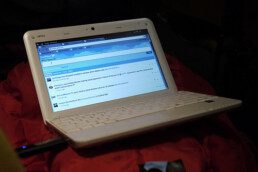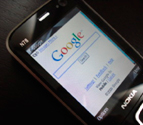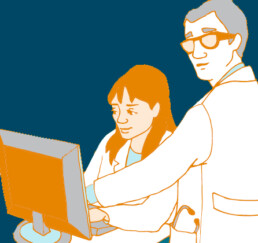ICT for next generation Cities
The challenge of fast urbanization is opening the way for the development of highly "smarter" cities, as more and more of its services rely on emerging technologies. The differentiating factor that can make cities "smart" is the integrated usage of information and communication technologies (ICT) in optimizing the flow of information between seven critical city infrastructure services: administration, education, healthcare, public safety, real estate, transportation, and utilities. By implementing initiatives based on this information to enhance efficiency and performance of these services to the citizen you create cities that are "smarter."
From the administration point of view a smart city will have a reliable system to reach the citizens effectively, to receive feedback, to collect data, to generate statistics and to properly communicate political decisions in a transparent manner. This will support decisions makers with the necessary knowledge required to make acute and quick decisions on city planning and maintenance.
Use of ICT in education services will improve the quality and experience while reducing costs. In developing countries, providing internet access to the educational resources will increase attendance, especially when targeting rural populations surrounding the city or individuals who cannot participate to daily courses. Usage of digital content and collaboration technologies will reduce costs while providing a higher quality and improved experience.
Smart healthcare systems can provide faster and more reliable services. Using scalable storage systems and wide communication platform, patient records con be stored and shared with any medical unit which requires them. Also the communication platform can be used to improve response time in case of emergency services. This is key during a time where epidemics are spreading across cities and information of patient diagnosis is pivotal to diagnosing and treating new patients.
Public safety can make use of communication technologies to reduce deployment time of the emergency response units. In the same time the communication network could be use to relay real-time information between dispatchers and filed units. While dispatchers have access to information via desktop computers, field units can access the network via handheld devices. Public safety services can also make use of closed-circuit television (CCTV) combined with video analytics and global positioning services in order to optimize deployment time. All of these allow for effective, immediate transition of data so that disturbances can be identified and controlled in an aggressive manner.
In real estate ICT can help reduce operating costs by using management systems to automate heating, cooling and illumination. Through motion, temperature, and weight censoring, lighting and cooling units can be controlled to operate at the most efficient levels. From inception, computer modeling will help in building design and identifying appropriate materials, architectural design as well adherence and reporting to relative green building certifications such as LEED.
Transportation can benefit from reduced traffic congestion and more efficient public transport by implementing smart computing technologies like congestion pricing. By passing through electronically controlled tolls, drivers pay more to use more congested roads in rush hours. Not only it reduces traffic congestion, but reduces the environmental impact of the transportation service while raising funds for the public transport.
Utilities can make use of smart grids to optimize water, gas and electricity consumption. Smart grids help identify water leaks and electricity losses. Also, transparency in the measurements towards the consumers can help in responsible usage behaviors and improve demand side management. Replacement of the carbon-intensive fuels with renewable energy can also contribute to "smarter" utilities by ensuring they are tapping into endless resources.
For the success of a smart city project ICT must be at the core of city planning and design. You cannot manage what you cannot measure, and you cannot accurately measure in real time without effective ICT tapping into all aspects of your city and aggregating the data.
Source: www.theurbanvision.com/
Medellín: wireless connectivity in education
The implementation of wireless broadband network puts Motorola certainly evidence that the recent selection of Medellin in the Digital Cities Motorola ranking as one of the 25 cities with a higher level of digitalization in Latin America, is not mere coincidence but the result a strong commitment. Commitment Motorola is proud to follow through technology.
"Digitization is not a feature unique to big cities or countries with higher GDP and greater penetration of telecommunications services, as the systematization of processes such as education is an attribute that can be adapted to any municipality, because today These days the technology is flexible and applicable to any city and geography, "said Manuel Riaño, regional manager of Broadband and Mobile Computing, Motorola, and adds," Motorola is proud to participate in initiatives like this that can provide better education to young people in Colombia. "
Technically, the implementation of this network were used wireless bridges PTP 300 Series Motorola OFDM and equipment that enable advanced features, providing reliable, high performance connectivity, even in obstructed or high level of interference. These systems offer excellent options for companies and governments who need to maintain connectivity between buildings, access to high-speed Internet and backhaul applications, voice over IP, multimedia and video.
Thus this new step, the capital of Antioquia continues its march toward a society that uses technology resources and provides its residents new and better possibilities of education.
Source: Educational technologies
71 percent of the world´s population uses mobile
In total, two billion people already have Internet access worldwide
At the Consumer Electronics Show (CES) held a few days in Las Vegas, president of Verizon, Ivan Seidenberg said that 71 percent of the world´s population already uses mobile phone and two billion people have Internet access. However, if there is something to be imposed this year 2011 is the 4G wireless network, thanks to the wave of product launches mobile operators to meet consumer demand. By Gloria Navas
71 percent of the global population, representing around five billion people use mobile phones and 2,000 million people have Internet access. That has been one of the ideas being taken up by the Consumer Electronics Show (CES), which was held these days in Las Vegas.
According to the Center for Research and Innovation in Telecommunications (Cinit) 2011 President and CEO of the company Verizon (one of the largest companies in the world), Ivan Seidenberg, said in his speech, also attended by directors of other companies ten years ago the broadband Internet barely existed and only one in three Americans had this service.
Faced with this data, now nine out of ten people enjoy this service and this is causing the wireless communications traffic to double every year. Similarly, sales of smartphones are growing 90 percent a year.
And if something from this year is going to impose it is the 4G wireless network, explains that he CBB. Until now, consumers who wanted to seize it did not have much choice with the devices that were in the market. This dynamic will change dramatically this year thanks to a flurry of product launches mobile operators seeking to meet growing consumer demand for wireless broadband faster and attract more revenue from data traffic.
Internet
Moreover, Seidenberg said that five years ago, the Internet video transmission amounted to only 10 percent of the total network traffic, while the middle and now totals may reach 90 percent in the near future.
The executive announced that very soon the three-dimensional television is the most common, like smart homes, smart cities, and the machines that communicate with other machines, among other things.
The chief operating officer of Verizon, Lowell McAdam, predicted, in turn, to participate in the forum, that within five years his company´s customers will have access to internet connection speeds of 100 gigabytes. That will handle the enormous growth in video traffic in the coming years.
On the other hand, Jeff Bewkes, President and CEO of Take Warner, said during his participation in the event that the world is watching more TV than ever and said it is starting to live now the second golden age of television. "Everything is increasing including the number of viewers, the ad, the budgets for programming and talent and quality," he said.
Bewkes noted that all visual content that was previously restricted to television, is now moving all types of attachments, including a cell phone.
Source: Trends in Telecommunications
The advantages of a Health 2.0 for society
In 3 years it has doubled the number of Internet users seeking information about the Health on the Net in 2006, 19% of the population in the European Union had used the Internet for this purpose, and in 2009, according to the report The Company Information in Spain 2010, and is 33% of the population.
The Spanish are concerned, above all, diseases, healthy eating, and drugs. These are the three main topics of Internet search users from Spain. Furthermore, the assessment by the Internet in our country is better than the rest of Europe, but at the same time, aware of the possibility of finding false information which leads to distrust. "The problem is that users have identified the health reference website, so no doubt this is an issue which must go in the future," the report says in reference to a similar study that Pfizer conducted the last year entitled ´The role of Internet in the consultation process on Health Information. "
New technologies and access to the online world is being felt also in health services. The European Union has calculated that his adaptation would mean a saving of 7,500 million euros each year in Europe. Another important attribute of this evolution is the reduction of up to 84% of patient medication errors.
The report notes Telefónica as an example of the use of e-health in Spain for electronic medical records, a tool that is already used by almost all family physicians and pediatricians in Spain (87%.) The appointment request through the network has been another major advantages of using Internet for the Healthcare System, and over 80% of health centers have this service running.
Not so with the use of electronic prescriptions, but the perspective is of great benefits such as congestion of the health centers. According to estimates, could be reduced up to 30% of visits to health centers for this service so that doctors will make more time for other patients. And consequently, the waiting time is also reduced to 16%.
Source: prsalud






